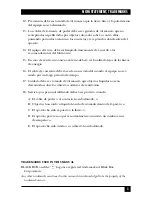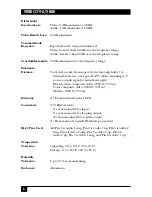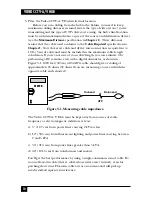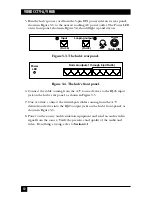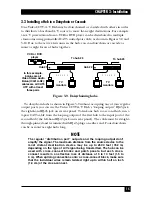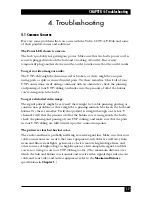
16
VIDEO CCTV-A/V HUB
If you need to reach more destinations than eight hubs can accommodate, you
can cascade from each hub to multiple others as shown in Figure 3-10 instead of
daisychaining. The regular outputs and looping output can all be used for this
purpose—any of these ports may be connected to the input port of another hub.
In the example in Figure 3-10, ten hubs (one first-layer hub, one not-shown
second-layer hub attached to its looping output, and eight other second-layer hubs
connected to its regular outputs) are used to distribute an A/V program to up to
72 monitors in an auditorium, multi-classroom, or corporate training environment.
Figure 3-10. Cascading hubs.
In this example, baluns are
all Video Stereo Audio
Balun (IC441A-R2); cables
are all CAT5 UTP with at
least three pairs; an
additional hub not shown
here, attached to the first-
layer hub’s looping output,
reaches classroom #1
VCR or DVD
player
First-layer hub
Second-layer hub #2
Second-layer hub #9
Classroom #2
Monitor 9
Monitor 65
Monitor 72
Monitor 16
Classroom #9
• • • • • •
• • • • • •
• • • • • •
TV
monitors
TV
monitors


